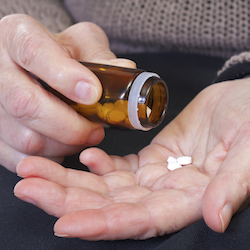Integrative medicine clinicians from various professional backgrounds and fields are encountering an ever-growing population of patients/clients suffering from acute and chronic pain conditions, many of these being inflammatory in nature including; sports injuries, degenerative and inflammatory arthritis, autoimmune-related disorders, and many more. Many of these patients experience significant gastrointestinal, renal, and coagulation side-effects, and more, and may not even be aware of them until they cause a serious medical disorder. There are emerging highly standardized and evidence-based natural agents that effectively modulate the same enzyme pathways as anti-inflammatory medications with much lower side-effect profiles. One such extract with strong supporting human outcome studies, flavocoxid, will be discussed in this article with emphasis on its safety profile and balanced action across a multitude of inflammatory pathways.
Published in Nutritional Perspectives: Journal of the Council on Nutrition of the American Chiropractic Association, Vol. 36, No. 3, by David Brady, ND.










